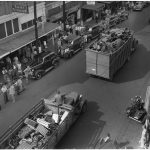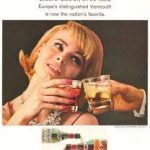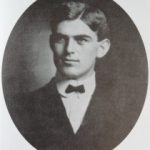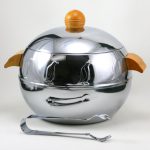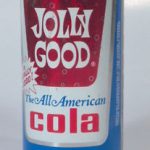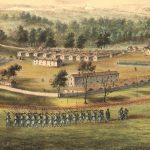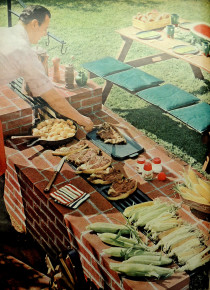
Fueled by the evolution of the middle-class suburban housing market and the modern family, home entertainment, especially outdoor activities, became a popular postwar activity. The Penguin Hot and Cold Server graced many patio and picnic tables during the 1950s and 1960s, but what sparked this general renewed interest in backyard recreation? Scholars suggest that with the advent of the automobile and its noise, fumes, and overall disturbing character, outdoor activities shifted to a patio at the rear of the home. This new space eventually expanded into activities such as cooking and entertaining.
Outdoor grilling became a popular form of recreation. The general enjoyment of the outdoors, combined with a new space for entertaining, offered Americans a place to unwind after the Depression and Second World War. Elaborate parties, swimming pools, and grills offered a new arena for indulging in American consumerism.
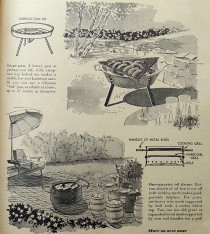
The Penguin Hot and Cold Server fit into the outdoor-grilling scene by functioning as a container for side dishes. The Penguin’s accompanying instruction booklet illustrated the server on a gingham tablecloth, a fabric synonymous with outdoor living. Dishes commonly associated with picnics and barbecues, such as salads and fruit cocktails were listed in the booklet as the ideal accompaniments to freshly grilled hamburgers and hot dogs. Statistics showed that hot dog production jumped from 750 million pounds in 1950 to 1,050 million pounds in 1960, and sales from lawn and patio furniture almost tripled, rising from $53.6 to $145.2 million.
Along with this rise in outdoor furniture and meat sales, portable grills and a vast array of tools and accessories became available. One could purchase a barbecue cart, rolling buffet, carving board, warming compartment, spit, or kabob grill. There also was the option to build your own brick-barbecue pit or portable grill. For the latter, a May 1952 issue of Better Homes and Gardens suggested a few options: attach iron legs to a Chinese wok or garbage can lid or use a sawed-off oil drum with heavy wire mesh. Magazines such as Better Homes and Gardens and House Beautiful provided their readers with a variety of articles about building and remodeling, gardening, and decorating. Topics on managing the family budget and recipes were also popular.
Written by Ann Glasscock, August 2014.
SOURCES
Alexander, Harold H. Design: Criteria for Decisions. New York: Macmillan, 1976.
Catlett, J. Stephen. Dateline Greensboro: The Piedmont and Beyond. Charleston: Arcadia Publishing, 2002.
“Fireplace feasts for your own back yard.” Better Homes and Gardens (June 1952): 78-79 and 110.
Matheson, Whitney. Atomic Home: A Guided Tour of the American Dream. Portland: Collectors Press, 2004.
Miller, Timothy. “The Path to the Table: Cooking in Postwar American Suburbs.” PhD disseration, University of Kansas, 2012.
“Portable barbecues you can make.” Better Homes and Gardens (May 1952): 292, 317-319.
